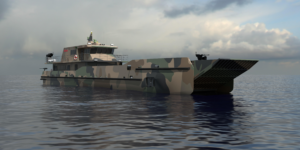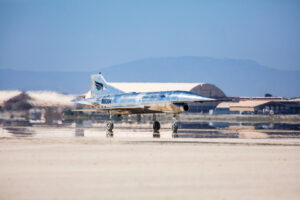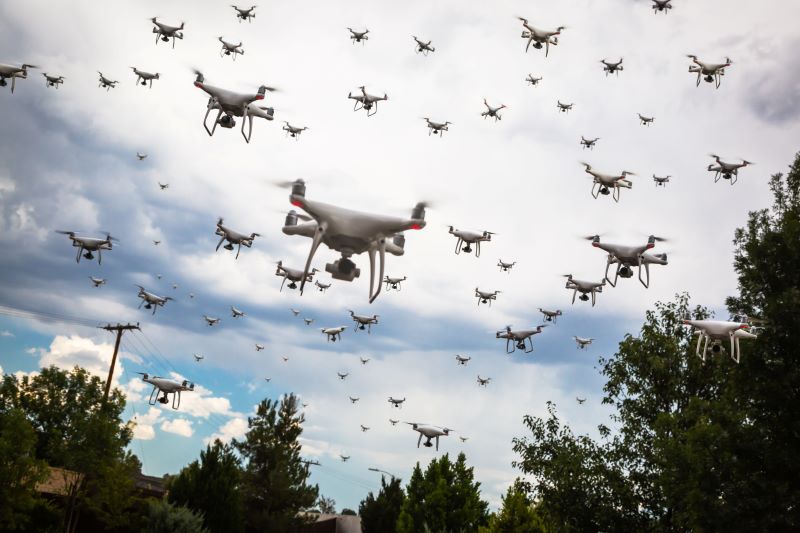Defense Daily
-
 Business/Financial
Business/FinancialMotorola Solutions To Acquire Mobile Mesh Communications Provider Silvus In $5 Billion Deal
Motorola Solutions [MSI] on Tuesday said it has agreed to acquire Silvus Technologies in a potential $5 billion deal that gives the company capabilities in scalable, self-healing, software-defined secure mesh […]
Tagged in: -
 Space
SpaceU.S. Space Force Highlights Chinese Development of ‘High Ground’ Systems
China’s development of “high ground” space systems, including anti-satellite (ASAT) weapons, that can reach geosynchronous orbit 23,000 miles above Earth is a concern for the U.S. Space Force (USSF). “The […]
-
 Space
SpaceApex Unveils New Satellite Bus; Sees Interest For Golden Dome Interceptors
Satellite bus developer and manufacturer Apex on Wednesday unveiled Comet, the third and largest platform in its product suite, which the startup says is generating interest to host space-based interceptors […]
Tagged in: -
Wednesday, May 28, 2025
- Army Details Potential Plan To Buy Over 4,000 C-UAS Systems, May Export To Taiwan
- SASC Member Tuberville To Run For Alabama Governor In 2026
- Serco Completes Acquisition Of Northrop Grumman Business Unit
- Machinists Approve New Contract With Pratt & Whitney, Head Back To Work
- Rocket Lab to Acquire Payload Provider Geost, Targeting National Security Missions
- Hermeus Achieves Flight With Quarterhorse Mk 1 Remotely Piloted Aircraft
- Navy Relieves PEO USC Citing Investigation
- Birdon Leads Construction Of Prototype Small Marine Corps Amphibs This Summer
- AETC Plans to Receive First T-7A in December for Training Integration
- NNSA ‘On Track’ With W88, to Reach Production Milestone ‘Relatively Soon’
-
Wednesday, May 28, 2025
- Army Details Potential Plan To Buy Over 4,000 C-UAS Systems, May Export To Taiwan
- Hermeus Achieves Flight With Quarterhorse Mk 1 Remotely Piloted Aircraft
- Serco Completes Acquisition Of Northrop Grumman Business Unit
- Navy Relieves PEO USC Citing Investigation
- SASC Member Tuberville To Run For Alabama Governor In 2026
- Rocket Lab to Acquire Payload Provider Geost, Targeting National Security Missions
- Birdon Leads Construction Of Prototype Small Marine Corps Amphibs This Summer
- Machinists Approve New Contract With Pratt & Whitney, Head Back To Work
- NNSA ‘On Track’ With W88, to Reach Production Milestone ‘Relatively Soon’
- AETC Plans to Receive First T-7A in December for Training Integration
-
 Navy/USMC
Navy/USMCNavy Relieves PEO USC Citing Investigation
The Navy on Tuesday announced Rear Adm. Kevin Smith, program executive officer for unmanned and small combatants (PEO USC), was relieved following a complaint “substantiated by an Office of the […]
Tagged in: -
 Congress
CongressSASC Member Tuberville To Run For Alabama Governor In 2026
Sen. Tommy Tuberville (R-Ala.), a member of the Armed Services Committee (SASC), on Tuesday announced plans to run for governor of Alabama in 2026. Tuberville’s confirmation that he would not […]
-
 Uncategorized
UncategorizedRocket Lab to Acquire Payload Provider Geost, Targeting National Security Missions
Rocket Lab has signed an agreement to acquire payload developer Geost, LLC in a bid to enter the satellite payload market and strengthen its national security space solutions. Rocket Lab […]
-
 Navy/USMC
Navy/USMCBirdon Leads Construction Of Prototype Small Marine Corps Amphibs This Summer
Australia’s Birdon was chosen by the Marine Corps to design and build two prototype small amphibious ships that can carry a few dozen Marines, with construction set to begin this […]
Tagged in: -
 Advanced / Transformational Technology
Advanced / Transformational TechnologyHermeus Achieves Flight With Quarterhorse Mk 1 Remotely Piloted Aircraft
Hermeus on Tuesday said its Quarterhorse Mk 1 unmanned aircraft successfully flew for the first time, a key milestone on the startup’s path to developing high-Mach and hypersonic aircraft. The […]

